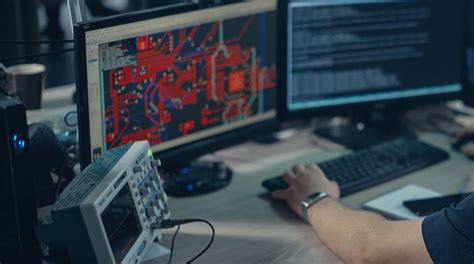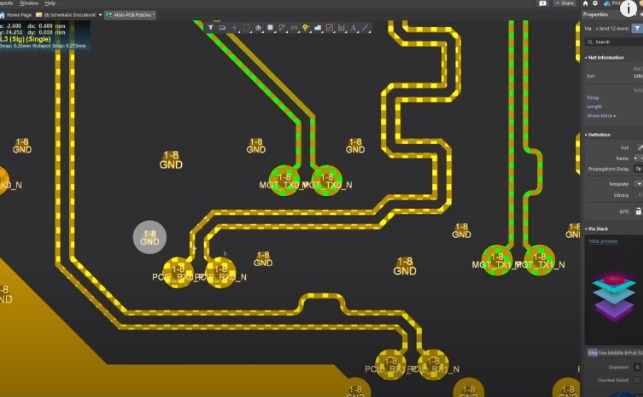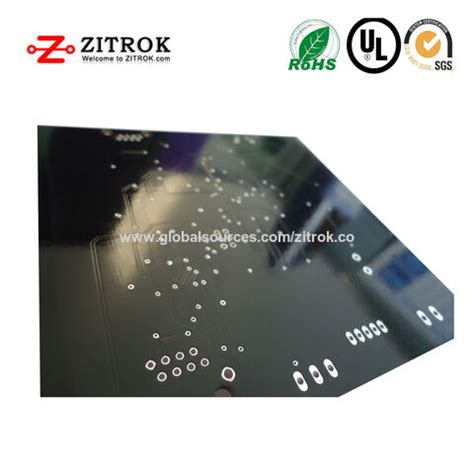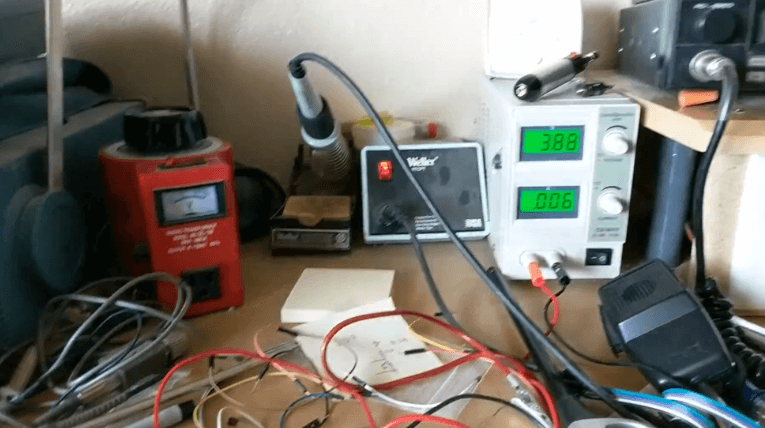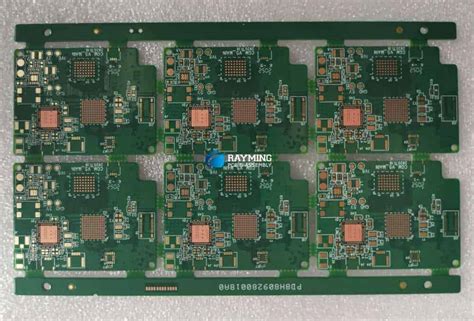Tailored Flex PCB Engineering for Next-Gen Devices

Key Takeaways
When evaluating PCB manufacturing partners for next-gen devices, understanding their expertise in flexible circuit design and rigid-flex integration is critical. Leading PCB manufacturing companies leverage advanced materials and automation to reduce PCB manufacturing cost while maintaining ultra-thin tolerances—key for wearables and medical tech. For instance, optimizing layer stack-ups or embedding components can trim production timelines by 20–30%, directly impacting your PCB manufacturing business ROI.
Consider these factors when selecting a partner:
| Criteria | Traditional PCB Manufacturing | Next-Gen Flex PCB Solutions |
|---|---|---|
| Prototyping Speed | 4–6 weeks | 1–2 weeks |
| Material Flexibility | Limited substrates | Polyimide, LCP, hybrid options |
| Cost Efficiency | Higher at low volumes | Scalable for niche applications |
| Integration Complexity | Rigid designs dominate | Seamless rigid-flex hybrid layouts |
This optimization ensures your designs meet thermal stability and signal integrity demands without compromising PCB manufacturing cost targets. By aligning with partners who prioritize precision engineering, you’ll accelerate development cycles while future-proofing your product roadmap.
It’s worth noting that supply chain agility and certifications (e.g., ISO 13485 for medical devices) further distinguish top-tier PCB manufacturing companies. Whether scaling prototypes or refining high-volume production, tailored solutions bridge the gap between innovation and manufacturability.

Next-Gen Flex PCB Innovations
As modern devices demand thinner, lighter, and more durable electronics, PCB manufacturing evolves to prioritize flexibility without compromising performance. Leading PCB manufacturing companies now integrate advanced materials like polyimide films and liquid crystal polymers, enabling circuits to bend thousands of times without failure. These innovations address critical challenges in wearables, medical implants, and aerospace systems, where rigid boards fall short.
Precision is paramount in designing these circuits, as even minor deviations can disrupt signal integrity. By leveraging laser direct imaging and automated optical inspection, manufacturers ensure micron-level accuracy across high-density interconnects. This attention to detail minimizes PCB manufacturing cost overruns caused by rework or material waste, making custom solutions viable for both prototyping and mass production.
For businesses navigating this shift, partnering with a PCB manufacturing business that specializes in flexible designs is crucial. Such collaborations streamline the transition from rigid to flex boards, optimizing layouts for heat dissipation and mechanical stress resistance. Explore how adaptive engineering bridges the gap between traditional and next-gen requirements, ensuring seamless integration into your product’s architecture.
As industries push toward miniaturization and IoT connectivity, these advancements in flex PCB technology are redefining what’s possible—setting the stage for the next wave of electronic breakthroughs.
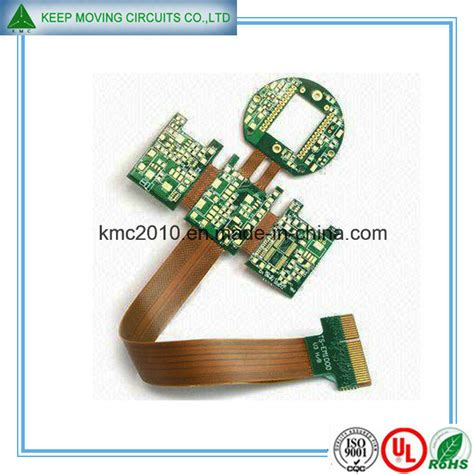
Rapid Prototyping for Advanced Devices
When developing next-gen electronics, speed and adaptability define success. PCB manufacturing processes must align with accelerated timelines without compromising precision. By partnering with experienced PCB manufacturing companies, you gain access to advanced prototyping tools like laser direct imaging and automated optical inspection, slashing iteration cycles from weeks to days. These capabilities are critical for refining flexible circuit geometries or testing dynamic bend requirements in wearable tech or foldable displays.
"Early collaboration with your manufacturer reduces PCB manufacturing cost by identifying material optimizations and design-for-manufacturability (DFM) improvements upfront."
Balancing PCB manufacturing business priorities—like scalability and quality control—requires transparent communication. For instance, selecting polyimide substrates over standard FR-4 might increase initial costs but ensures reliability in high-temperature environments. Similarly, hybrid rigid-flex designs demand close coordination to avoid misalignment during lamination. By leveraging rapid prototyping workflows, you mitigate risks in later production stages while maintaining compliance with IPC-6013 standards for flexible circuits.
Transitioning from prototype to mass production hinges on seamless data handoffs. Modern PCB manufacturing teams use cloud-based platforms to share real-time design feedback, ensuring your high-density interconnects or embedded components meet performance benchmarks. This integration bridges the gap between concept and market-ready devices, setting the stage for precision-engineered solutions in the next phase of development.
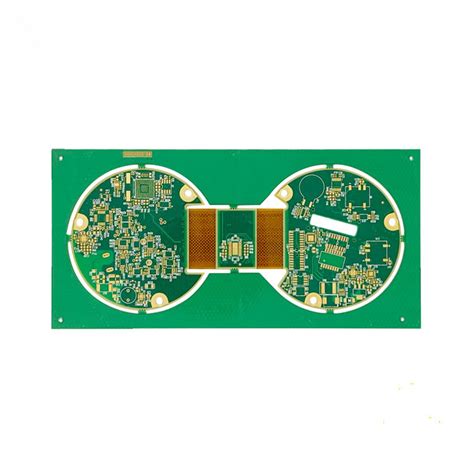
Precision Engineering in Flexible Circuits
When designing flexible circuits for next-gen devices, precision engineering ensures your product meets exact functional demands. Unlike traditional PCB manufacturing, flexible circuits demand tighter tolerances—often below 25µm—to accommodate dynamic bending and compact spaces. Leading PCB manufacturing companies leverage advanced photolithography and laser ablation to achieve sub-millisecond accuracy in trace alignment, critical for high-frequency applications like wearables or medical sensors.
Balancing PCB manufacturing cost with performance requires meticulous material selection. Polyimide substrates, for instance, offer thermal stability but increase expenses. By collaborating with specialized PCB manufacturing business partners, you can optimize layer stacks and adhesives without compromising durability. Signal integrity simulations further refine designs, minimizing crosstalk in multi-layered flex circuits.
This focus on microscopic precision directly impacts scalability. Even minor deviations in dielectric thickness or copper etching can derail production timelines. Modern workflows integrate AI-driven inspection systems to detect flaws at 10x higher resolution than manual checks—ensuring your flex circuits align with mission-critical specifications while accelerating integration into final assemblies.
As you advance from prototyping to mass production, remember: precision isn’t just about tolerances—it’s about harmonizing design intent with PCB manufacturing realities to deliver reliability at scale.
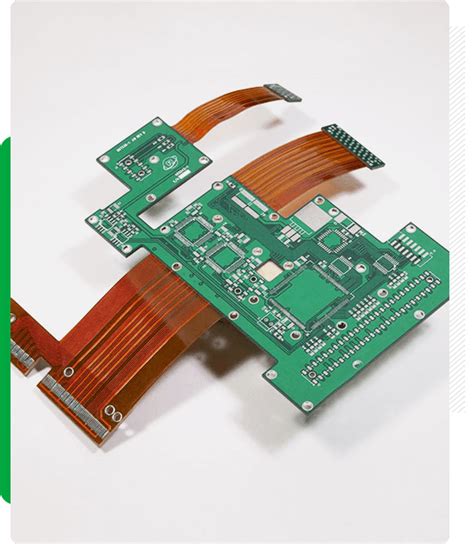
Tailored Rigid-Flex Integration Strategies
When implementing rigid-flex PCB designs, you need strategies that harmonize flexible circuits with rigid sections while maintaining signal integrity and mechanical stability. Leading PCB manufacturing companies achieve this by optimizing layer stack-ups, material selection, and bend-radius calculations to prevent delamination or stress fractures. For instance, pairing polyimide substrates with high-Tg laminates ensures thermal resilience in high-density applications like wearables or aerospace systems.
Balancing PCB manufacturing cost with performance requires precise simulation tools to validate designs before prototyping. Advanced firms use 3D modeling to predict how dynamic flexing impacts impedance control and EMI shielding—critical for minimizing post-production revisions. Collaborating with a PCB manufacturing business specializing in rigid-flex integration also streamlines compliance with industry standards like IPC-6013D, reducing risks in mass production.
By prioritizing design-for-manufacturability principles, you can accelerate timelines without sacrificing reliability. This includes specifying copper weights, coverlay adhesives, and stiffener placements early in the workflow—decisions that directly influence yield rates and scalability in PCB manufacturing. Tailored strategies ultimately bridge the gap between innovative concepts and robust, market-ready devices.
Accelerating Electronics Development Timelines
When bringing advanced electronics to market, time efficiency often determines competitive advantage. By collaborating with experienced PCB manufacturing companies, you gain access to accelerated design-to-production workflows that compress development cycles by up to 40%. Modern PCB manufacturing leverages automated design validation and AI-driven simulations to identify potential flaws before prototyping begins, reducing costly iterations. For complex projects involving rigid-flex integration, this approach ensures seamless compatibility between flexible circuits and traditional board architectures.
Optimizing PCB manufacturing cost becomes critical when scaling prototypes to mass production. Leading providers employ advanced material sourcing strategies and modular assembly techniques to balance speed with budget constraints. For instance, using high-density interconnect (HDI) technologies minimizes layer counts while maintaining signal integrity, directly lowering per-unit expenses. Additionally, streamlined logistics within the PCB manufacturing business ecosystem—from component procurement to final testing—eliminates bottlenecks that delay time-to-market.
By aligning your project with partners who prioritize both precision and agility, you can navigate evolving technical demands without sacrificing quality or deadlines. This strategic synergy is particularly vital for industries like wearables or IoT, where rapid iteration cycles define market leadership.
Custom PCB Solutions for Modern Tech
When designing cutting-edge electronics, selecting the right PCB manufacturing partner ensures your device meets both performance and durability benchmarks. Modern applications demand flexibility in design and scalability in production—qualities that top-tier PCB manufacturing companies prioritize. By leveraging advanced materials like polyimide or liquid crystal polymer, these partners deliver circuits that withstand extreme temperatures, bending, and miniaturization requirements.
Balancing PCB manufacturing cost with quality is critical, especially for startups or enterprises scaling IoT or wearable technologies. Reputable providers optimize material usage and employ automated assembly lines to reduce waste, translating to faster turnaround times without compromising reliability. For instance, rigid-flex hybrids—a staple in aerospace and medical devices—require precise layer alignment, which directly impacts PCB manufacturing business margins if not executed flawlessly.
Your choice of manufacturer should align with your product’s lifecycle stage. Prototyping benefits from agile partners offering iterative testing, while mass production demands robust supply chain management. Emphasize design-for-manufacturability (DFM) principles early to avoid costly revisions. This approach not only accelerates timelines but ensures seamless integration with existing components—a cornerstone of next-gen device development.
As you refine your electronics, remember that PCB manufacturing innovation directly influences your competitive edge. From material science breakthroughs to AI-driven quality control, staying ahead means partnering with firms that blend technical expertise with scalable solutions. The right collaboration transforms complex designs into market-ready products, bridging the gap between concept and reality.
Seamless Flex Circuit Design Techniques
Achieving seamless integration of flexible circuits begins with design methodologies that prioritize compatibility across PCB manufacturing stages. When engineering dynamic flexing zones, you must balance bend radius limits with material durability—a critical factor in reducing PCB manufacturing cost by minimizing material waste and rework. Leading PCB manufacturing companies leverage advanced simulation tools to predict mechanical stress points, ensuring designs align with production realities.
Your choice of substrate materials and trace routing patterns directly impacts signal integrity in high-frequency applications. By collaborating early with PCB manufacturing business partners, you can validate stack-up configurations and impedance control requirements before prototyping. This proactive approach avoids costly mid-production adjustments, particularly in rigid-flex hybrids where misaligned layers disrupt assembly.
Transitioning from design to fabrication demands precision in copper etching and coverlay application. Modern laser ablation techniques enable micron-level accuracy, but success hinges on selecting vendors with expertise in both PCB manufacturing and flexible circuit assembly. Remember: seamless designs aren’t just about geometry—thermal management and solder mask adhesion must align with your device’s operational environment. By embedding manufacturability into every design decision, you streamline timelines while maintaining the reliability expected in next-gen electronics.
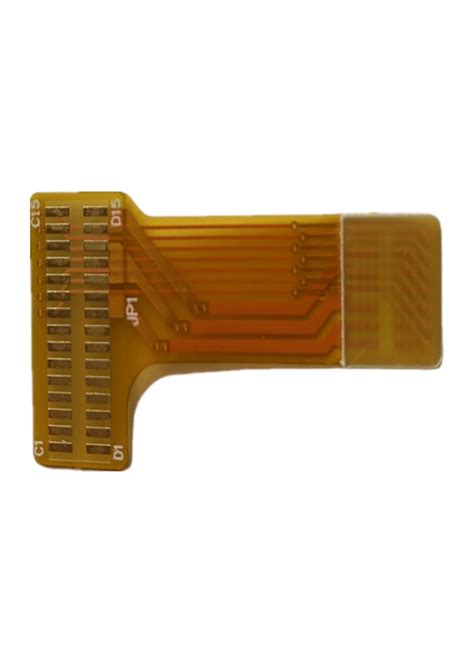
High-Performance PCB Manufacturing Trends
As next-generation devices demand faster, lighter, and more durable electronics, PCB manufacturing processes are evolving to meet these challenges. Leading PCB manufacturing companies now prioritize advanced techniques like additive manufacturing and laser direct imaging to achieve micron-level precision. These innovations not only reduce PCB manufacturing cost by minimizing material waste but also enable rapid scaling for high-volume production.
You’ll notice a growing emphasis on automation and AI-driven quality control, which streamline workflows while ensuring consistent performance across rigid-flex designs. For businesses balancing tight timelines, partnering with agile PCB manufacturing business providers ensures access to cutting-edge technologies like embedded components and ultra-thin substrates. Such advancements directly address the need for seamless integration in wearables, medical devices, and IoT systems.
However, optimizing PCB manufacturing cost requires strategic material selection—think high-frequency laminates or thermally stable polymers—paired with modular production lines. This approach lets you adapt quickly to design iterations without sacrificing reliability. By aligning with suppliers who specialize in high-density interconnects and sustainable practices, you future-proof your supply chain while maintaining competitive lead times.
The shift toward data-driven manufacturing underscores how modern trends are redefining what’s possible in electronics, blending speed, precision, and scalability into every layer of production.
Conclusion
In the realm of next-generation electronics, achieving seamless integration of custom flex PCB solutions demands partnering with pcb manufacturing companies that prioritize both innovation and scalability. As you evaluate options, consider how precision-engineered circuits and optimized pcb manufacturing cost structures directly impact your product’s performance and market viability. Leading manufacturers now leverage advanced materials and automated workflows to deliver ultra-thin rigid-flex configurations while maintaining competitive pricing. By aligning your design requirements with a pcb manufacturing business specializing in high-mix, low-volume production, you gain agility to iterate prototypes faster and scale efficiently. This strategic approach not only future-proofs your devices but also ensures compliance with evolving industry standards. Ultimately, the right manufacturing partnership transforms complex pcb manufacturing challenges into opportunities for differentiation in crowded tech markets.
FAQs
How do custom flex PCBs differ from traditional rigid boards in manufacturing processes?
Custom flex PCBs require specialized materials like polyimide and advanced PCB manufacturing techniques to achieve bendability without compromising durability. Unlike rigid boards, they involve precise laser etching and layered bonding to ensure flexibility.
What drives the PCB manufacturing cost for tailored flex circuits?
Costs depend on design complexity, material choices, and production volume. High-density interconnects or mixed rigid-flex designs often increase expenses, but partnering with experienced PCB manufacturing companies can optimize budgets through scalable solutions.
How can I ensure seamless integration of rigid-flex PCBs in compact devices?
Work with PCB manufacturing business experts who offer 3D modeling and prototyping. Their expertise in stack-up planning and thermal management ensures components fit precisely, reducing post-production adjustments.
Why choose specialized PCB manufacturing companies for next-gen electronics?
These firms combine cutting-edge fabrication tools with industry-specific knowledge, enabling faster iteration cycles and compliance with aerospace or medical-grade standards. Their focus on PCB manufacturing precision minimizes signal loss in high-frequency applications.
What timelines should I expect for prototyping custom flex circuits?
Advanced PCB manufacturing partners deliver prototypes in 5-10 days, depending on design validation needs. Automated testing and real-time collaboration tools help accelerate development without sacrificing quality.
Ready to Optimize Your Flex PCB Project?
For tailored guidance on PCB manufacturing cost, design strategies, and rapid prototyping, please click here to connect with industry experts.


